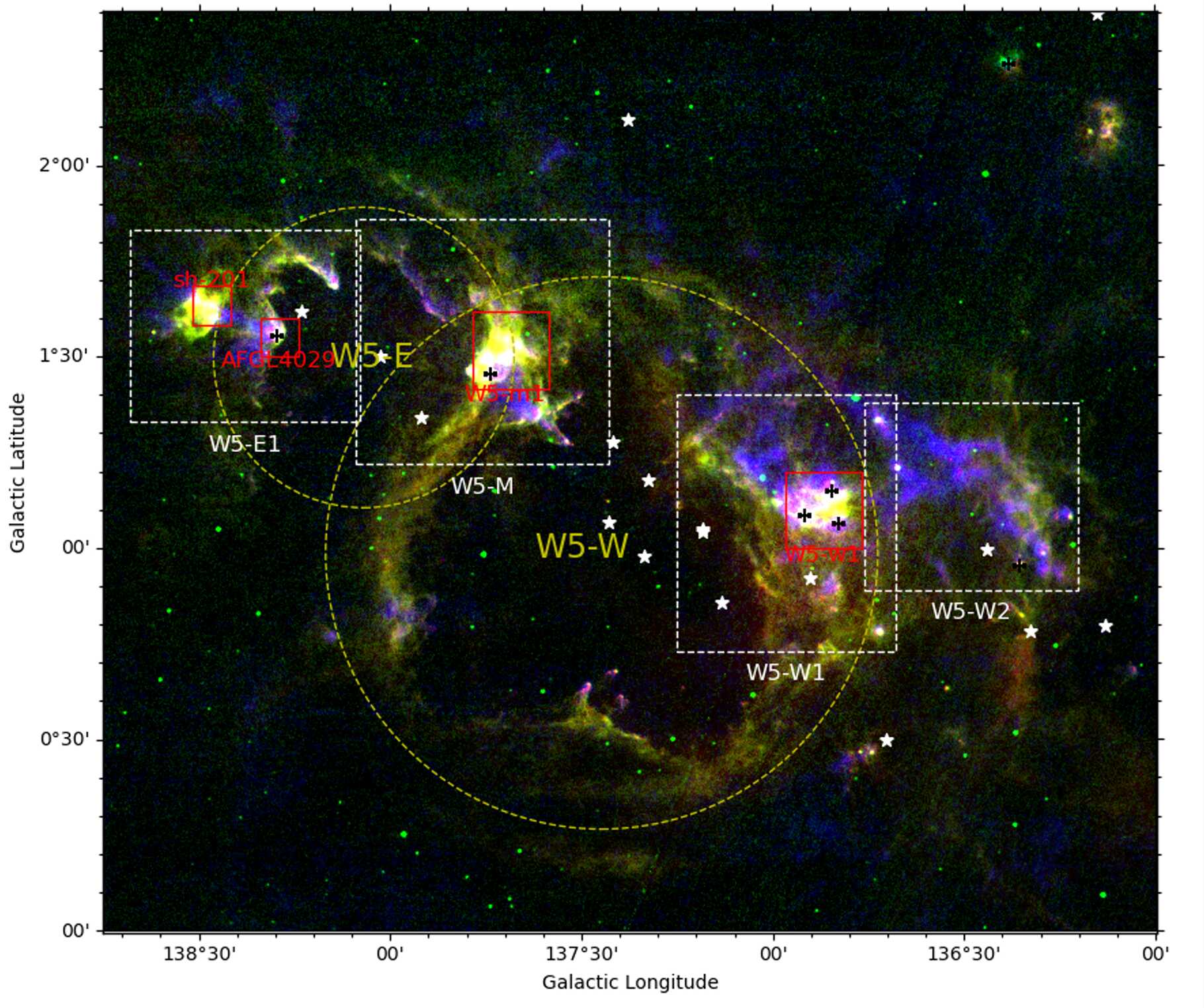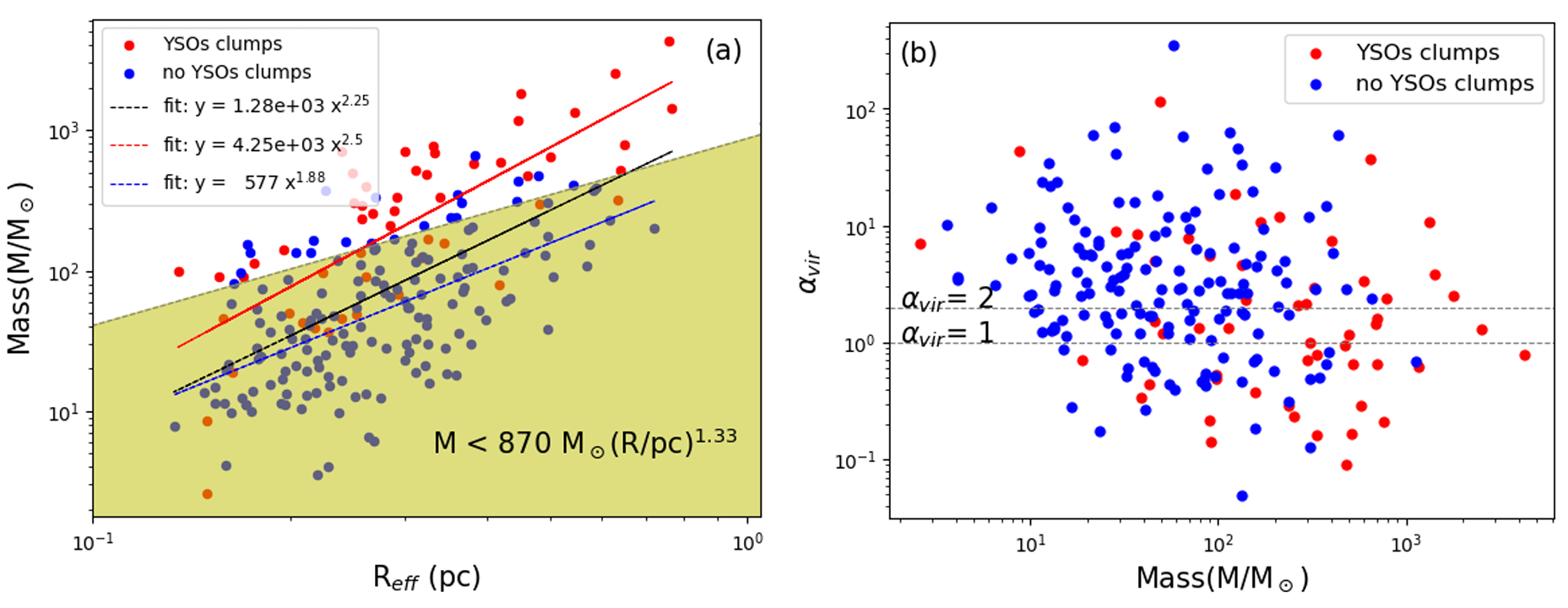Recently, PhD student SHEN Hailiang from the Star Formation and Evolution Group at the Xinjiang Astronomical Observatory of the Chinese Academy of Sciences, under the guidance of his supervisor, Prof.Jarken ESIMBEK, conducted an in-depth study of two adjacent massive HII regions —W5 molecular cloud complexes on the Perseus Arm of the Milky Way. By conducting observations of CO (1-0) and NH3, the researchers revealed the feedback effects of massive stars on surrounding molecular clouds and star formation activities. The related results were published in Astronomy & Astrophysics (2024, A&A, 689, A140).
Following the formation of massive stars, the feedback effects of massive stars—comprising stellar winds and radiation—strongly influence the structure, properties, and evolution of surrounding molecular clouds , as well as the star formation within them. This feedback can both trigger and suppress subsequent star formation, especially affecting clump structures that represent the initial states of star formation.
The researchers utilized the 13.7-meter millimeter-wave telescope of the Purple Mountain Observatory and the NanShan 26-meter Radio Telescope at the Nanshan Station to conduct large-scale CO (1-0) and NH3 observations of dense regions in the W5 molecular cloud. This study aims to uncover the effects of massive stellar feedback on star formation.
The results indicated that the molecular gas at the boundaries of the W5 HII regions is significantly influenced by the expansion and thermal radiation from these regions, resulting in higher molecular hydrogen column densities and temperatures, along with notable redshift and blueshift characteristics in the molecular gas.
By using 8-micron PAH radiation as a tracer of the feedback regions, they found that the molecular clouds within the feedback regions exhibit active dynamics, with dense clumps generally having higher velocity dispersion and lower virial parameters. These clumps mostly meet the conditions for forming massive stars, and the vast majority of Class I young stellar objects are concentrated in these areas, in stark contrast to regions not affected by feedback.
The study demonstrates that the expansion and radiation feedback from the two HII regions in W5 have effectively triggered star formation activities on the boundary shells.
This research was supported by the National Natural Science Foundation of China and the National Key R&D Program of China.

Figure 1. RGB tricolor map overlaid with 250 μm Herschel-PACS, 8.28 μm MSX, and 13CO(1–0) data from PMO.

Figure 2. Mass-radius relations as well as mass-virial parameter relationships for identified clump structures.